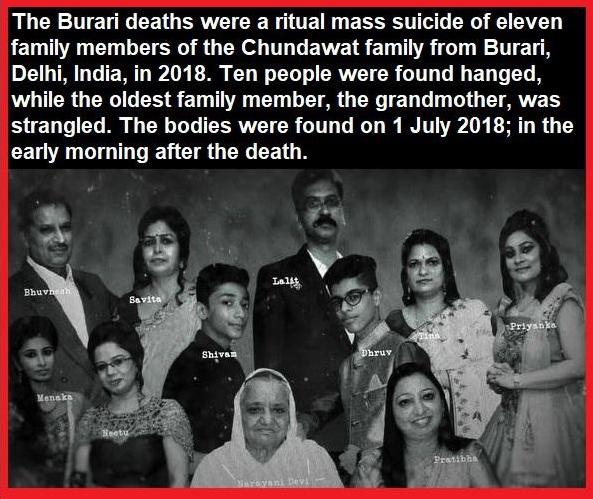On July 1st, 2018, a shocking tragedy unfolded in the heart of Burari, Delhi. Eleven members of the Bhatia family, an ordinary middle-class Indian joint family, were discovered lifeless in their shared residence. What made this even more chilling was the eerie ritualistic nature of their deaths, suggesting their willingness to participate. The family was led by the late Bhopal Singh and his wife, Narayani Devi, who were the elders. I was particularly intrigued by the role of Lalit, their son, in this tragic sequence of events, and how his story was chronicled in eleven diaries found at the scene. These diaries, backed by post-mortem findings, provided crucial insights into what transpired.
Lalit emerged as a central figure in this tale, displaying signs of psychological distress. The family's collective delusion seemed to be a textbook case of shared psychotic disorder. I delved deep into Lalit's life, employing a holistic biopsychosocial approach to understand his journey. My analysis drew from various sources, including research literature and the Netflix Documentary 'House of Secrets: The Burari Deaths.'
The family's dynamics underwent a profound shift after the passing of Bhopal Singh. Lalit, amidst his grief, assumed the role of the family's patriarch. This transformation is evident from the earliest diary entry in September 2007, shortly after his father's demise. The diary became a guide, outlining the family's daily routines and behaviors. For instance, young Dhruv was advised to reduce his excessive phone use, with the diary emphasizing, "Follow Lalit's instructions for solutions to your problems."
The diaries revealed a disturbing belief within the family: they thought Lalit was possessed by his late father. Lalit experienced auditory hallucinations, causing him to imitate his father's voice and behavior. Neetu, a family member, even told neighbors that her uncle was a vessel for their grandfather's spirit, guiding the family.
Lalit's descent into psychosis could be linked to his prior injuries. In 1998, a biking accident left him with head injuries, a known trigger for psychotic symptoms. In 2004, he endured a brutal attack, leaving him unable to speak due to deep psychological trauma, as explained by Dr. Ambarish Satwik, a vascular surgeon. Despite medical advice, Lalit never sought psychiatric help, a decision influenced by the prevailing stigma around mental health. Studies have shown that untreated trauma can contribute to the development of psychosis. Lalit's case illustrates the difficulty many face in seeking help for mental health issues.
Dr. Ambarish Satwik drew parallels between the family's situation and the emergence of cults. Leaders often gain blind faith by performing extraordinary, seemingly miraculous feats. For the Bhatia family, Lalit's adherence to the diary's instructions and his subsequent recovery of speech might have appeared miraculous. Financial prosperity during this time further reinforced the belief that following these instructions led to rewards. The family became increasingly isolated, not divulging their activities to outsiders. Lalit's regained ability to speak solidified their faith in him and the instructions, even if it was based on a tenuous correlation. A board of scientists and a psychologist concluded that this shared delusion amounted to a case of shared psychosis disorder (SPD), where close associates develop delusions.
The events in the Burari home stemmed from Lalit's changing social circumstances following his father's death, his new role as the family's patriarch, his traumatic injuries, and untreated psychosis. The family's prosperity, rooted in the diary's instructions, strengthened their unwavering faith, ultimately leading to their tragic participation in a deadly ritual from which they never emerged.

I AM VENGEANCE


No comments yet, come on and post~